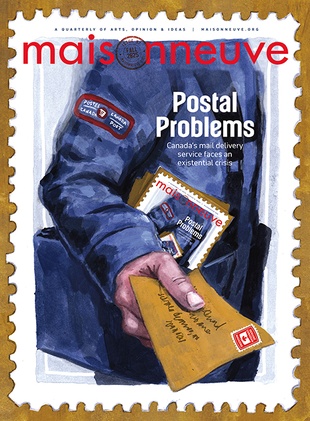We Were Brooksie
Stolen clothes make the man
There is a new, hipper Brooks Brothers store on Fifth Avenue for the new millennium. When I was in my early twenties, nearly everything I wore came from the original shop at Madison and Forty-Third: three-piece, three-button suits, rep ties, Sea Island cotton boxer shorts, English tweed sports coats, a worsted overcoat that weighed little more than a scarf, Peal & Co. shoes from London, oxford and end-on-end broadcloth shirts, a tux, a cummerbund, a pleated shirt, a full set of studs, even a bowler—and one tomato-red shirt with its own ascot, attached.
No, I did not grow up in Greenwich, nor was I pampered in a Park Avenue penthouse. I had not prepped in penny loafers with a Dunhill lighter or a Swiss Army knife in my gray flannels at Groton or Hotchkiss. My parents had a flat in East Flatbush, and I trekked to Samuel J. Tilden High School in my Keds or PFs, with the sleeve of my Fruit of the Loom T-shirt rolled, sometimes over a pack of Luckies, and in my Wranglers’ pocket, a Zippo and a switchblade. I was known in the neighborhood, not for my fox-trot or lacrosse game, but for my deftness at dirt games such as “mumbleypeg” and “land,” and for my prowess on the pavement, where I could, when the wind was right and with a new spaldeen, hit two sewers in punchball.
At the time that I acquired my sophisticated Madison Avenue wardrobe, I was not hanging with Greek-lettered underclassmen at Yale or Dartmouth, but was hanging from a strap on the IRT from Brooklyn, en route to a BA at City College in Harlem. To help support my family, I worked various part-time jobs—handcart pusher in the garment district, shelver in the public library, gofer at a Times Square movie studio where porno films were shot after hours and, after that establishment was raided (fortunately, while I was at class one night), as a page at one of the TV networks. This last opportunity could not have underscored more dramatically the distinction between stripping for failure and dressing for success. Here, in a boxy red uniform blazer, I met and greeted suave, sophisticated, well-tailored celebrities, politicians and major media figures of the day, from Annette Funicello to Gypsy Rose Lee, Roy Orbison to JFK, Dick Clark to Dick Nixon.
To move up in this world, I knew I needed to alter my image, so I next took a stockroom job at 346 Madison Avenue, the Brooks Brothers flagship store. The wage was minimum and working conditions demeaning, but the hefty employee discounts and free alterations were right up my alley. We were carefully eyeballed every evening on leaving the establishment and required written permission to go from one floor to the next, even to use the men’s room. A piss pass, we called it.
Everyone who worked there dressed like a managing partner in a law firm. Even the custodial staff came and went in style. Middle-management hotshots (all bus-and-tunnel types such as myself, if a few years older) were overbearingly self-important in their well-fitted tweeds or sharkskins. Salesmen affected what they believed to be upper-class accents when waiting on customers, reverting back to their native Bronxese or Brooklynese once behind the fitting-room curtains, where Brooks Brothers was a rather different world from the one the company strove so hard to fabricate for its clientele.
Since Brooks Brothers had for decades made only the subtlest changes in the contours of its garments (like Rolls-Royce, some were fond of boasting), to the untrained eye a four- or seven-year-old suit looked as good as a new one. Except, that is, if it happened to be a “horse blanket,” a buyer’s blunder, that not-quite-right blue or bilious green overplaid, worth a ducat, a bonus, to the man who could move it, unload it, get it out of the store and onto the back of the vacationing pharmacist hoping to impress his fellow Rotarians in Duluth, or to the conventioneer too drunk after the liquid luncheon to see clearly what he was trying on, or even to the “egg,” the reviled regular who appeared every week or so to take up the salesmen’s time but who rarely bought so much as a handkerchief, while the help, all the stockroom boys, the fitters and the other salesmen, were placing bets and pushing to get a peek through the curtains to see if the sucker would actually go for it.
If an item stayed on the floor more than two years, however, it generally ended up going for 90 percent off or better at the annual employees’ TOS (Taken Out of Stock) sale, a free-for-all grabfest reminiscent of the bra and girdle pulls I had witnessed years before on annual shopping trips to Klein’s on the Square, where my mother had schlepped me every September for new corduroys. It was at a TOS that I got the tux and all the accessories.
But even these bargains were not enough for some, and so, for the most compulsive and most enterprising, a sophisticated in-house pilfering ring had evolved, run by reckless middle managers and patronized by nearly everyone. It worked in various ways.
You indicated there was something you wanted, and within a few days you received a message. Trench coats were the easiest. You could do this one yourself. You removed a brand new one from the rack in the stockroom when no one was looking, ripped off all the price labels, dragged it along the floor, walked across it a few times and took it into the dry cleaning service the store operated. When you walked out the employees’ exit with it a week later, you had all the right receipts to show the drowsy security guard. You did have to pay the twelve dollars for the cleaning, but you got a three-hundred-dollar raincoat for your troubles. Smaller items—shirts, ties, sweaters, wallets, sports coats, what have you—were deposited in a locker two blocks away at Grand Central Terminal. You paid the inside man an agreed-upon fee (a fraction of the price), he gave you a key and it was yours. No tax, and it was there waiting for you, perfectly folded in tissue paper, in a blue and white Brooks Brothers envelope. Even your fellow subway riders could not fail to be impressed. The store switched to more conventional bags years after I left—well after the ring was broken up and several of my former colleagues had been convicted and sentenced to servitude in the company’s factory in Queens until they could pay for all they had stolen.
Most memorable experiences? Two in particular come to mind. There was the day that Cary Grant, having to leave unexpectedly for Europe and lacking time for his customary custom fitting, stopped by. Grant was definitely “Brooksie,” which was what we called the regulars, including former mayor Robert Wagner, actor Tony Randall, the ever suave Fred Astaire and countless other swells. Grant had already retired from acting at the time and was now a cosmetics executive. We gawked like kids when he stripped to his white button-down, rep tie, Sea Island cotton boxer shorts and over-the-calf lisle hose. Not a gray hair out of place, he still had the well-toned physique of a young athlete and was as suave, polite, charming and handsome as, well, as Cary Grant. And the accent was real. He ended up buying a dozen or so ready-mades, all to be delivered to his hotel the next morning. The fitters and tailors were more than happy to push through what normally would have taken two weeks for a mere CEO.
The other, much more hilarious, if poignant memory is of the time that Timothy, the six-foot-four, 155-pound stock clerk from the East Bronx, decided to give Mr. McFarquhar, a rotund salesman whose phony Larchmont Lockjaw he had taken particular delight in ridiculing, the shock of his life. (Standing side by side, they did look a bit like Laurel and Hardy.) Several of us showed up early for work that morning and, before the sales staff had punched in, removed two stacks of chesterfields from the coat table (Brooks eschewed hangers and stacked all its coats on long mahogany tables back then). We then placed them over the stick-thin Timothy, who lay there, white powder on his face, eyes closed, hands crossed over his chest, dressed in one of Brooks’ opera capes smuggled down from the third floor.
By agreement, Mr. Kelly, the fitting-room supervisor, asked that Mr. McFarquhar bring him one of the chesterfields. The size he requested had been placed at the bottom of the heap. When McFarquhar finally lifted it, after peeling off all the others (and with all of us watching from behind the curtain), there lying before him was the very image, the virtual reincarnation of Count Dracula himself, who opened his lids and said, in a perfect Transylvanian accent, “I vant to trink your bloot, Mister Mac-far-kew-har.” It was the only time in my memory of that job, perhaps in the life of the store, that unrestrained laughter was heard on the sales floor.
McFarquhar survived the ordeal but requested a transfer to sportswear. I left the place after a year, before Timothy and several other stock boys and assistant buyers got caught in the dragnet that swept through the establishment after the thievery ring was discovered.
I next interviewed for a job in the sales department back at the TV network, wearing a gray pinstripe three-piece, a white button-down oxford and a silk paisley four-in-hand. I was hired and began what was to be a fourteen-year ascent up the media corporate ladder, which I ultimately came to find as routine and as unexciting as, well, as a Brooks Brother suit.





